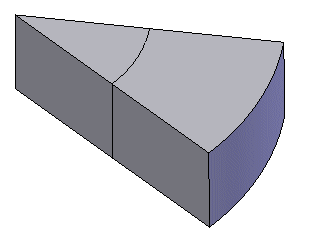Description
A long aluminum cylinder, 50 mm in diameter initially at 200 ºC, is suddenly exposed to a convection environment at 70 ºC and a convection coefficient of 525 W/m2 K. Calculate the temperature at a radius of 12.5 mm, one minute after the cylinder is exposed to the environment.

File Name
Browse to
drive letter:\Users\Public\Public
Documents\SOLIDWORKS\SOLIDWORKS
version\samples\Simulation
Examples\Verification\Thermal_3.SLDPRT and open the
file.
Study Type
Transient thermal analysis.
Shell Parameters
Shell thickness = 10 mm - Thin shell formulation.
Material properties
Thermal conductivity = 215 W/m K, Density = 2700 Kg/m3, Specific heat = 936.8 J/Kg K.
Modeling Hint
A small wedge away from the ends of the cylinder is used. The effect of convection of the circular end faces of the cylinder is ignored. The model is insensitive to thickness as the heat dissipation per unit length of the cylinder is constant. The problem is solved using solid and shell elements. Split lines are used so that the results along the 12.5 mm radius are easily evaluated.
Results
| |
|
Temperature (ºC) at radius 12.5 mm |
Error (%) |
| Theory |
118.40 |
- |
| SOLIDWORKS Simulation |
Shell
|
119.46 (average) |
1% |
| Solid
|
119.47 (average) |
1% |
The listed temperature is the average temperature at a radius of 12.5 mm at 60 seconds.
Reference
Carslaw, H. S., and Jaeger, J. C., “Conduction of Heat in Solids,” 2nd edition, Oxford University Press, 1959.